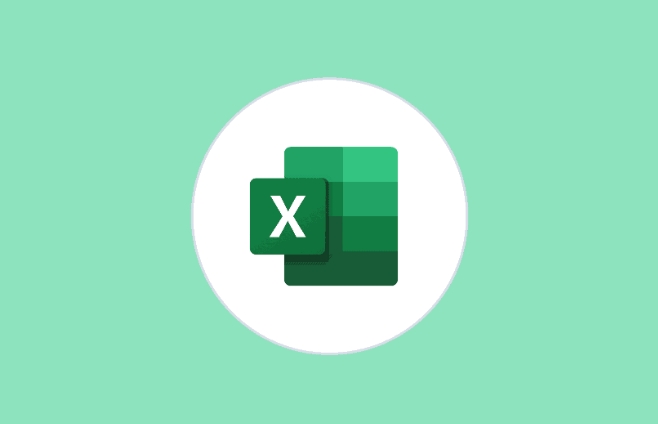To run a macro in Excel, you can assign it to a button, use the Macros window, set a keyboard shortcut, or make it run automatically on file open. First, assign a macro to a clickable button via the Developer tab for ease of use by others. Second, run it directly from the Macros window (Alt F8) for testing or occasional use. Third, assign a keyboard shortcut during macro creation or through the Macros window for faster access. Fourth, configure the macro to run automatically when opening the workbook via the VBA editor for setup tasks. Each method offers flexibility depending on your needs.

Running a macro in Excel isn't as complicated as it might sound, especially once you get the hang of the basics. If you've recorded or written a macro and want to run it, there are several straightforward ways to do so — depending on how you want to use it.

Assign a Macro to a Button
One of the easiest ways to run a macro is by assigning it to a button. This makes it clickable and user-friendly, especially if others will be using your spreadsheet.

- Go to the Developer tab (if you don’t see it, enable it via File > Options > Customize Ribbon > check Developer).
- Click Insert, then choose a form control button.
- Draw the button on your sheet.
- When the "Assign Macro" window pops up, select the macro you want to run and click OK.
- Now anyone can just click that button to run the macro without needing to know anything else.
This method works well for repetitive tasks like sorting data, exporting values, or refreshing reports.
Run a Macro from the Macros Window
If you're still testing or only running macros occasionally, using the built-in Macros dialog box is simple and direct.

- Press
Alt F8to open the Run Macro dialog. - From the list, select the macro you want to run.
- Click Run.
You can also click Edit to view or tweak the VBA code behind the macro. This is useful when debugging or making quick changes. Just make sure not to accidentally break any code while editing.
Use a Keyboard Shortcut
When you want speed and efficiency, setting up a keyboard shortcut for your macro is the way to go.
- When recording a new macro, Excel gives you the option to assign a shortcut key (like Ctrl Shift M).
- For existing macros, you can assign a shortcut through the Macros window (
Alt F8), then click Options and set a shortcut key.
Keep in mind: shortcuts are case-sensitive and shouldn't conflict with existing Excel shortcuts. Also, if multiple macros have the same shortcut, only one will run — so stay organized.
Automatically Run a Macro When Opening a File
Sometimes you want a macro to run automatically when the workbook opens. This is helpful for setup tasks, like refreshing data or initializing settings.
To do this:
- Open the VBA editor (
Alt F11) - Double-click ThisWorkbook under the Project Explorer
- Choose Workbook from the left dropdown and Open from the right
- Insert your macro code here
Now every time the file opens, the macro runs. Make sure the macro doesn't take too long or users might think the file is frozen.
That's basically how you run a macro in Excel — whether manually or automatically, there’s a method that fits your needs. Some methods are more beginner-friendly, while others give you more control. Either way, once your macro is ready, getting it to run is just a few clicks away.
The above is the detailed content of how to run a macro in excel. For more information, please follow other related articles on the PHP Chinese website!

Hot AI Tools

Undress AI Tool
Undress images for free

Undresser.AI Undress
AI-powered app for creating realistic nude photos

AI Clothes Remover
Online AI tool for removing clothes from photos.

Clothoff.io
AI clothes remover

Video Face Swap
Swap faces in any video effortlessly with our completely free AI face swap tool!

Hot Article

Hot Tools

Notepad++7.3.1
Easy-to-use and free code editor

SublimeText3 Chinese version
Chinese version, very easy to use

Zend Studio 13.0.1
Powerful PHP integrated development environment

Dreamweaver CS6
Visual web development tools

SublimeText3 Mac version
God-level code editing software (SublimeText3)

Hot Topics
 How to Use Parentheses, Square Brackets, and Curly Braces in Microsoft Excel
Jun 19, 2025 am 03:03 AM
How to Use Parentheses, Square Brackets, and Curly Braces in Microsoft Excel
Jun 19, 2025 am 03:03 AM
Quick Links Parentheses: Controlling the Order of Opera
 Outlook Quick Access Toolbar: customize, move, hide and show
Jun 18, 2025 am 11:01 AM
Outlook Quick Access Toolbar: customize, move, hide and show
Jun 18, 2025 am 11:01 AM
This guide will walk you through how to customize, move, hide, and show the Quick Access Toolbar, helping you shape your Outlook workspace to fit your daily routine and preferences. The Quick Access Toolbar in Microsoft Outlook is a usefu
 Google Sheets IMPORTRANGE: The Complete Guide
Jun 18, 2025 am 09:54 AM
Google Sheets IMPORTRANGE: The Complete Guide
Jun 18, 2025 am 09:54 AM
Ever played the "just one quick copy-paste" game with Google Sheets... and lost an hour of your life? What starts as a simple data transfer quickly snowballs into a nightmare when working with dynamic information. Those "quick fixes&qu
 6 Cool Right-Click Tricks in Microsoft Excel
Jun 24, 2025 am 12:55 AM
6 Cool Right-Click Tricks in Microsoft Excel
Jun 24, 2025 am 12:55 AM
Quick Links Copy, Move, and Link Cell Elements
 Don't Ignore the Power of F9 in Microsoft Excel
Jun 21, 2025 am 06:23 AM
Don't Ignore the Power of F9 in Microsoft Excel
Jun 21, 2025 am 06:23 AM
Quick LinksRecalculating Formulas in Manual Calculation ModeDebugging Complex FormulasMinimizing the Excel WindowMicrosoft Excel has so many keyboard shortcuts that it can sometimes be difficult to remember the most useful. One of the most overlooked
 Prove Your Real-World Microsoft Excel Skills With the How-To Geek Test (Advanced)
Jun 17, 2025 pm 02:44 PM
Prove Your Real-World Microsoft Excel Skills With the How-To Geek Test (Advanced)
Jun 17, 2025 pm 02:44 PM
Whether you've recently taken a Microsoft Excel course or you want to verify that your knowledge of the program is current, try out the How-To Geek Advanced Excel Test and find out how well you do!This is the third in a three-part series. The first i
 How to recover unsaved Word document
Jun 27, 2025 am 11:36 AM
How to recover unsaved Word document
Jun 27, 2025 am 11:36 AM
1. Check the automatic recovery folder, open "Recover Unsaved Documents" in Word or enter the C:\Users\Users\Username\AppData\Roaming\Microsoft\Word path to find the .asd ending file; 2. Find temporary files or use OneDrive historical version, enter ~$ file name.docx in the original directory to see if it exists or log in to OneDrive to view the version history; 3. Use Windows' "Previous Versions" function or third-party tools such as Recuva and EaseUS to scan and restore and completely delete files. The above methods can improve the recovery success rate, but you need to operate as soon as possible and avoid writing new data. Automatic saving, regular saving or cloud use should be enabled
 5 New Microsoft Excel Features to Try in July 2025
Jul 02, 2025 am 03:02 AM
5 New Microsoft Excel Features to Try in July 2025
Jul 02, 2025 am 03:02 AM
Quick Links Let Copilot Determine Which Table to Manipu






